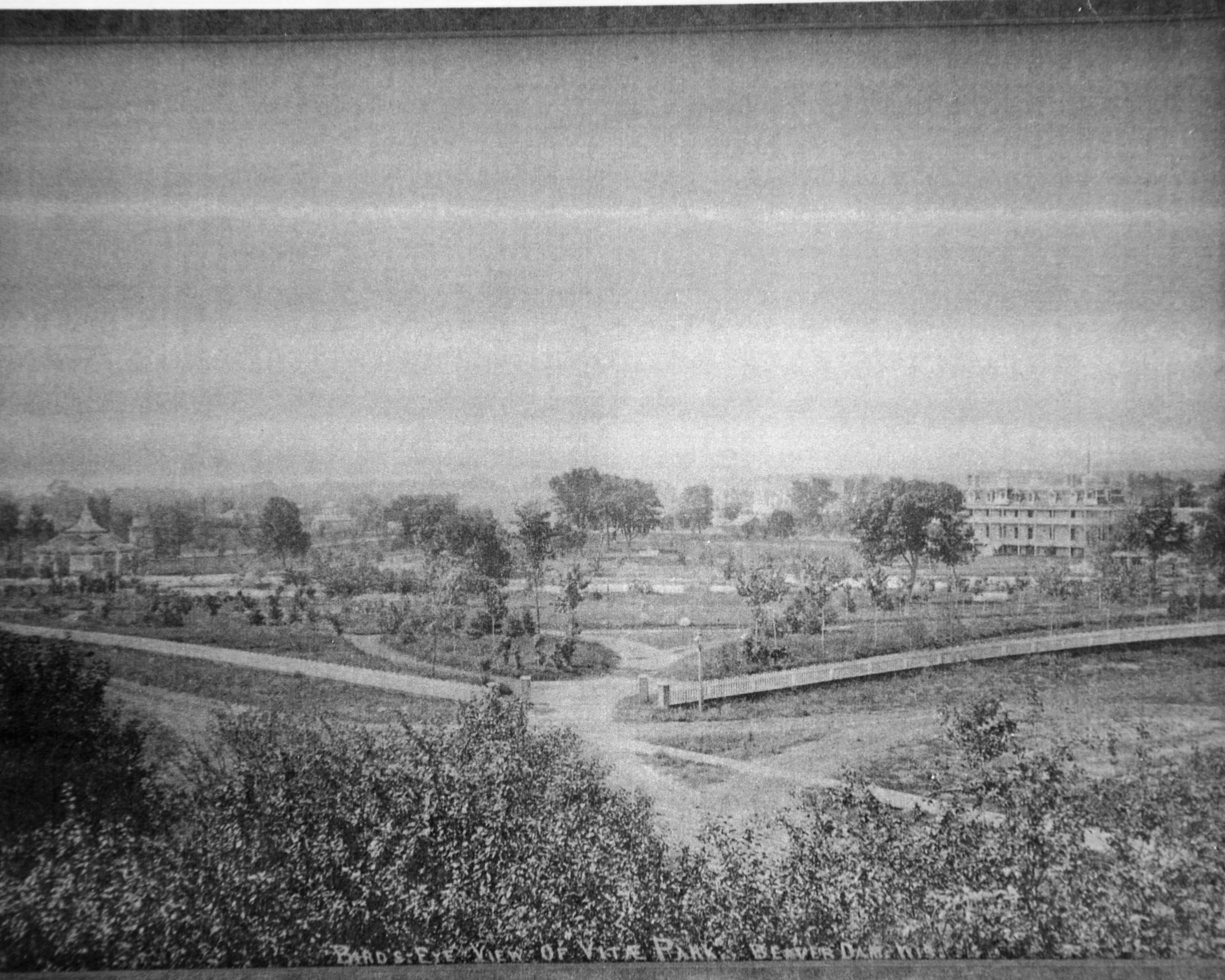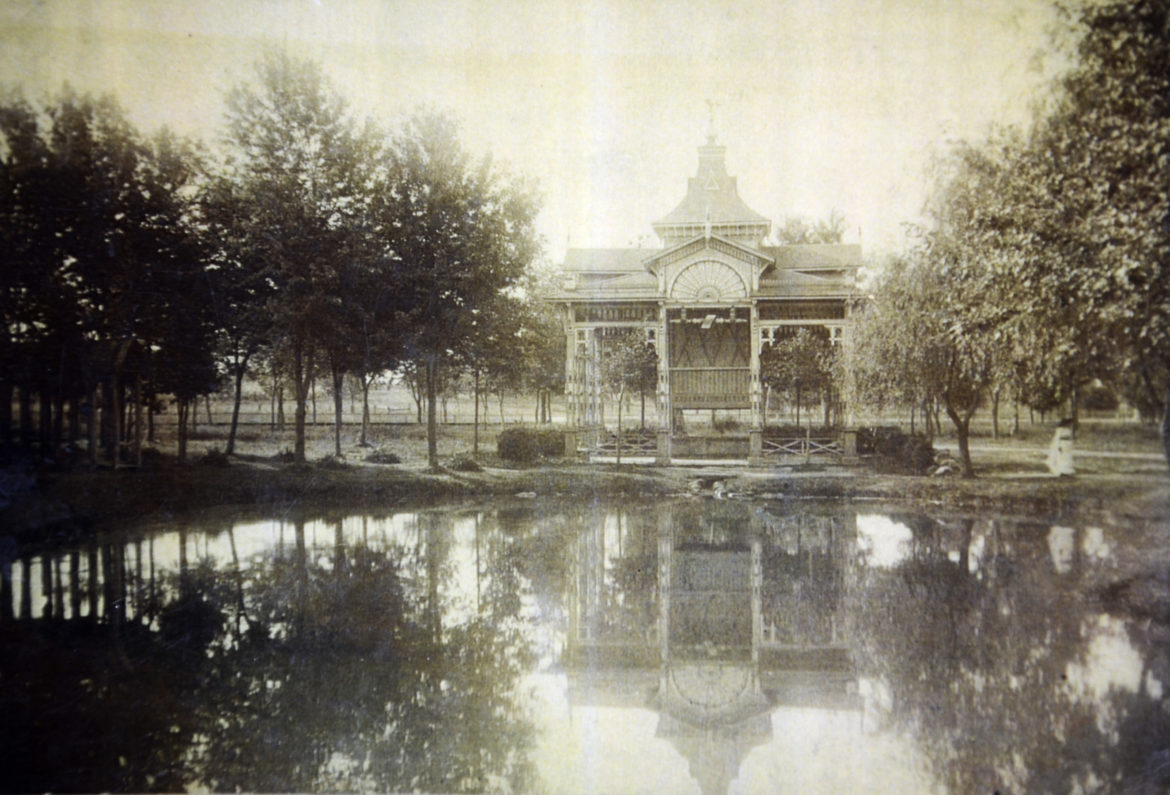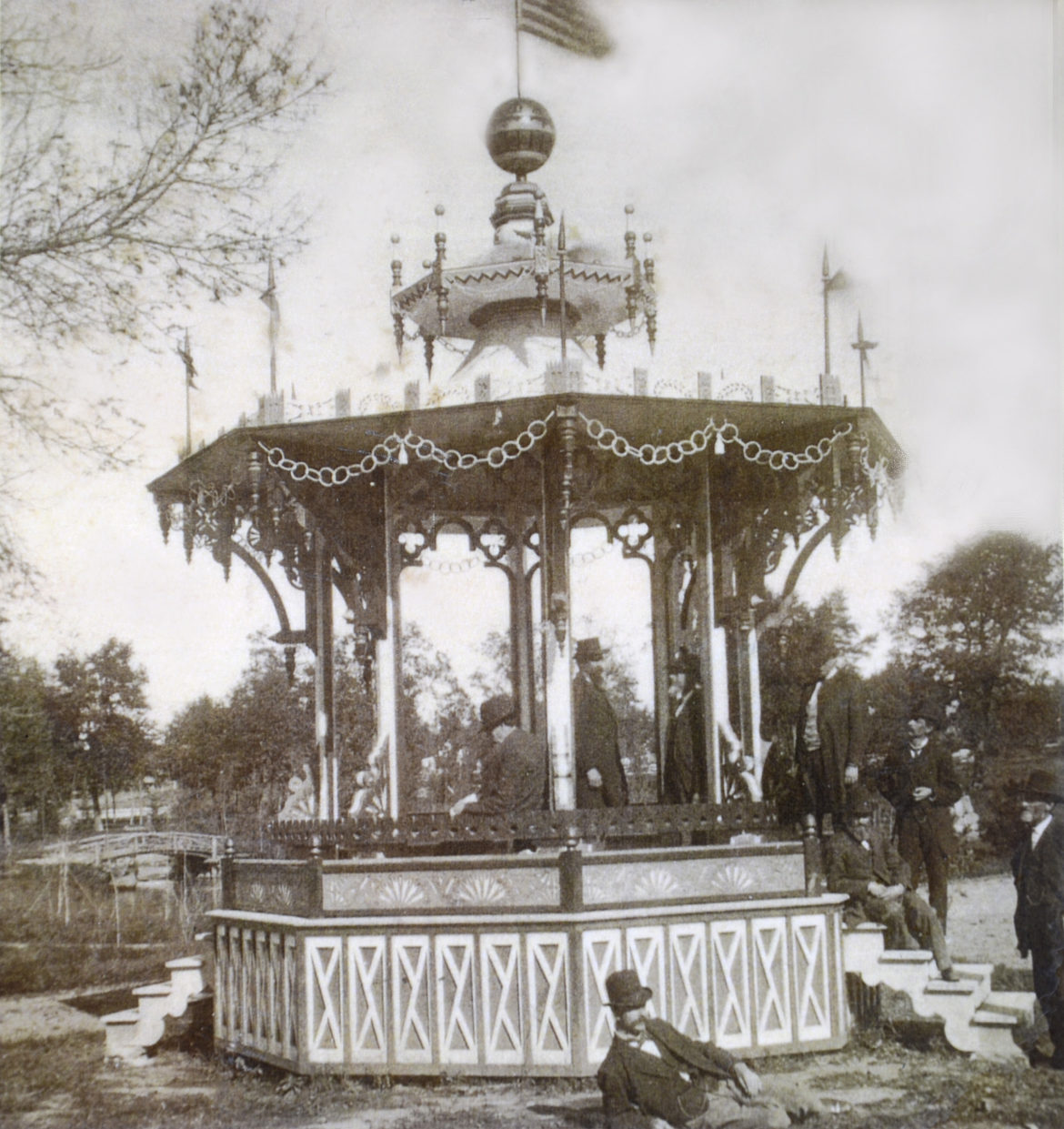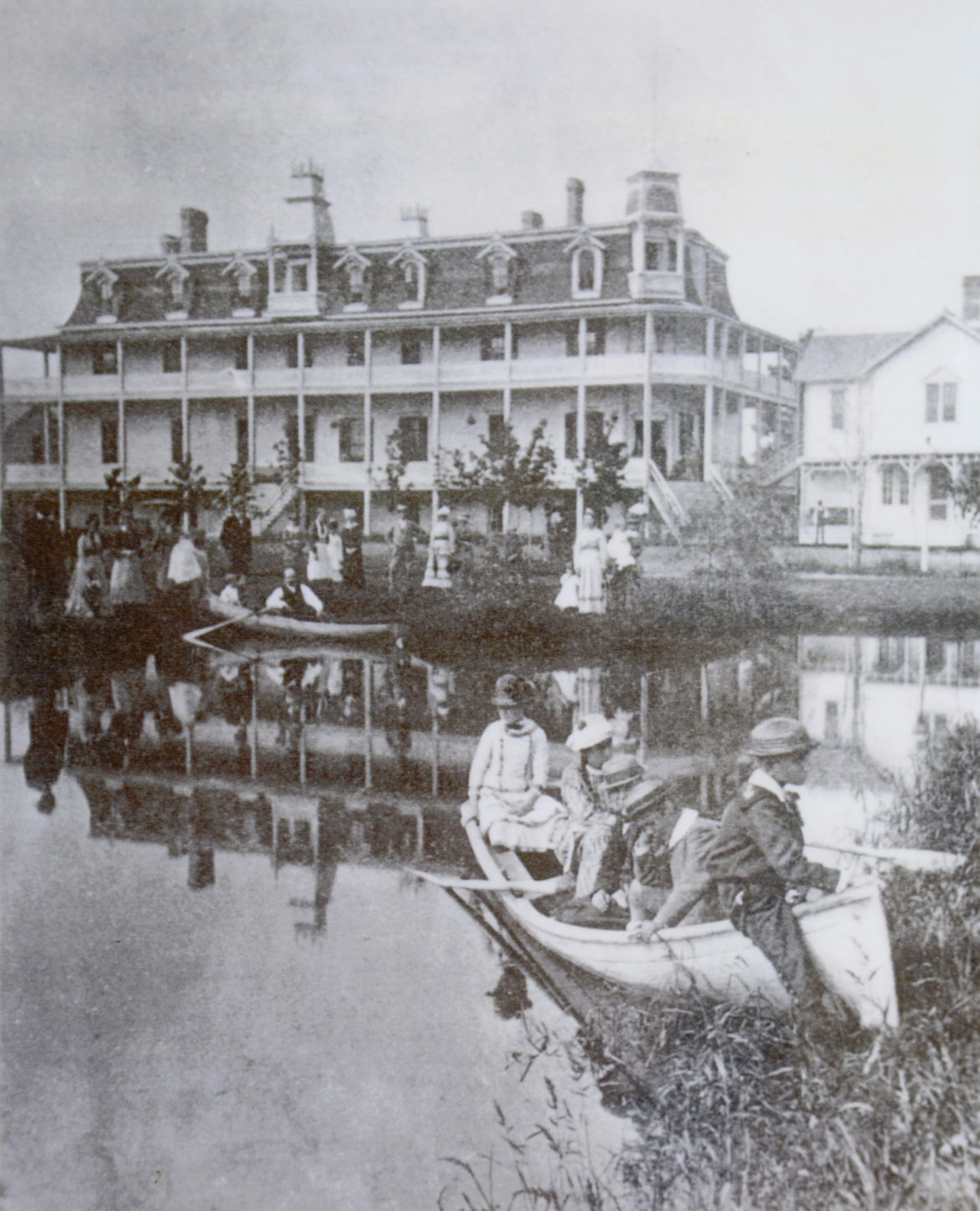 By: Lloyd Clark
By: Lloyd Clark
Beaver Dam has always been a focal point for tourists visiting Wisconsin. Beaver Dam is home to the Williams Free Library building, the first public library with “open stacks” in the United States, now the home of the Dodge County Historical Museum.
On Park Avenue, a tourist cannot only enjoy the Queen Anne architecture of the Swan House, but can also view the home of America’s favorite television dad, Fred Mac Murray, at the same time. On the other hand, you could easily veer off on Spring Street and visit the Hotel Rogers, not only on the National Register of Historic Places, but one of the sites for filming the blockbuster, Public Enemies.
However, one attraction has been bringing “tourists” to our area for over 2000 years. For many residents of Beaver Dam, it is the true heart of our city – the Vita Spring in Swan City Park.
It may be hard to imagine the humble and unassuming 10.5-acre park located adjacent to the corners of South University Avenue and East Mill Street could attract such attention. Especially today, when the only water that can actually be seen is green, scum-covered and quite often littered with trash from visitors either too lazy or too thoughtless to spend the extra few seconds to deposit their refuse in a trash barrel.
However, in 1942, the Federal Works Agency commissioned the Wisconsin Library Association to write the book Wisconsin: A Guide to the Badger State. The book noted, “In the city is Vita Spring Park, laid out around Vita Spring which was regarded as a holy place to the Winnebago and Potawatomi, who attributed healing properties to its waters.”
In 1947, in a booklet titled Indian Legends of Historic and Scenic Wisconsin, folklorist Dorothy Moulding Brown expanded on this idea and wrote as to the importance of Vita Spring to Native American people. Though the words were few, the insight is invaluable.
Ms. Brown wrote, “This spring was known to the red men of the forest as the ‘healing spring’. Muchkaw [M?š??ga ?, “Strong One”], the great medicine chief of the Winnebago, continued to visit this spring as long as he lived. He died in about the year 1860, at the great age of 120 years.
In talking about this spring, he said, so long ago as he could remember, it had been known to the Indians as a ‘healing spring’; that long years ago there had been contentions between his tribe and the Potawatomi for the possession of it for medicine water and a hunting ground, it being a resort for wild animals, especially in times of great drought.” Ms. Brown’s use of the term “resort” was probably not by chance.
In 1880, Dr. George Elbridge Swan, a prominent Beaver Dam physician born in Eden, New York, invested $50,000 to purchase and improve the area around the former Native American holy site. Renamed Vita Spring Park, Dr. Swan built a four-story Vita Park Hotel and turned the healing spring into a summer resort.
It is said that upon opening the resort, Dr. Swan stated, “I name this water Vita or life, life to the whole urinary economy, and better health to the entire system.” Not only was he a prominent physician, Dr. Swan was a shrewd politician and businessperson as well. He understood well the Nineteenth Century fascination among the wealthy to visit spas and resorts to bathe in, and consume, mineral water to improve their health. What could be more enticing to the Victorian palate than a mineral spring that had been holy to the native people of the region for thousands of years? Apparently, nothing.
In the 1883 travel book published by the Chicago, Milwaukee and St. Paul Railway Company, Reconnaissance of the Golden Northwest, the unnamed author waxed extremely poetic about Beaver Dam and Vita Park. Here is the excerpt from the book on our fair city:
Oh I what a great charm there is about the place. Everything is unconventional, the situation is all natural, streets and houses as pleasant as pleasant can be, groves of natural trees, natural elevations and natural ravines, a glorious lake, with shores adapted by Nature to the enjoyment of all who visit them. Steamboats, yachts, sail and row-boats, yawls and “jolly” boats; alive, genial, whole-souled cultured population of some 7,000 believers in America and a good, honest American Lord God Almighty!
A college of fine grade, good schools, extensive factories — two turning out cloths of finest texture — thrive in and honor the handsome city.
Here we are “spell-bound;” but lest it be said we are “clear gone,” we draw upon the description given by the “Triumvirate” before mentioned, upon which we discover no copyright:
“The country around Beaver Dam affords some of the pleasantest drives over smooth roads through woodland or prairie. In the vicinity are some of the finest farm establishments of the West. On the Fox Lake road is the highly – cultivated farm of Hon. S. D. Burchard; four miles north of Beaver Dam on the Waupun road, is the Hambletonian stock farm of Mr. William Bonner — brother of Robert Bonner, Esq., of the New York Ledger — six miles east is the famous Spring Brook farm, owned by H. B. Sherman, Esq., proprietor of the New Dennison House, of Indianapolis, Ind.
“The entire country around is full of interest to the lovers of the beautiful in Nature, and whether you go eastward toward Horicon, or west toward Columbus, or south through the grand forests of Lowell, there is a pleasing variety of scenery, and new life and vigor to the traveler.
“The recent discovery of the VITA MINERAL SPRING, possessing unexcelled medicinal properties, lends an additional charm to this beautiful region, and gives to Beaver Dam a rightful place among the most attractive and healthful of summer resorts.
“Dr. G. E. Swan, Mayor of the city, discovered this spring in June, 1879, and found, by actual tests and experiments, that it’s sweet and crystal water was a remedy long desired for kidney diseases and rheumatic pains. Many of the residents of Beaver Dam, and those who spent the recent summers here, testify to the remarkable curative properties of this spring. Dr. Swan has numerous orders from abroad, and is shipping large quantities of the Vita Water to parties in the East and South, and its popularity is constantly increasing.
VITA PARK.
“The elegant Park of twelve acres surrounding the Vita Mineral Spring is a perfect gem of beauty, and awakens the admiration of all its visitors. Dr. Swan has fitted up these grounds regardless of expense, and thrown them open freely for the benefit of all who come to drink of the life-giving waters. Skillful architects and landscape gardeners have been employed and already large sums have been expended in making this park the most picturesque and delightful place of the kind in the Northwest. As you enter the northeast gate, which, by sliding upward, forms a grand archway, rich in wood-work carving and ornamental tracery, you get a fine view of the entire grounds.
“Passing along by grass plots and flower-gardens to the sparkling lakes, and rustic boathouse, you come to the grand Pavilion which is erected over the Vita Spring. This structure is the finest pavilion in the Northwest, and rivals that of the Congress Spring at Saratoga. The spring bubbles up and pours out its flowing treasures of the sweetest and purest water into a marble basin from whence it flows into a series of lakes that add greatly to the attractions of the park.
“The dipper-boy at the counter waits upon the visitors in true Saratoga style, and as you wander through these enchanting grounds, and admire the exquisite taste and beauty of Vita Park you almost fancy that you are in Fairmount, or in Central Park. Here are conservatories of choice plants and flowers, a complete bathing establishment where many afflicted with rheumatism and kindred diseases have found relief, then the Laboratory where the water is barreled, the music pavilion and engine-house, and pretty boats, and smooth lawns, and fountains, which conspire to make this once famous Indian resort a most attractive summer home for health, comfort, and pleasure.
VITA PARK HOTEL.
“The beautiful hotel on the western side of Vita Park is specially built for the entertainment of summer visitors. It is four stories high, with a French roof and towers. Two wide verandahs surround the building, and there are large and comfortable guest-chambers, wide and airy halls, open fireplaces and all the modem improvements for comfort and health. It will accommodate over a hundred guests. Here is a delightful place to spend the summer. The spacious grounds and cooling shade invite rest and refreshment for the weary invalid and the seeker for health and strength.”
The enterprising proprietor is enlarging the hotel, and making preparations for the increased business coming as per advices from all quarters. Beaver Dam is sixty-three miles from Milwaukee, and reached twice daily by the trains of the Chicago, Milwaukee & St. Paul Railway.
Our party remained here a few days, because we could not muster resolution to hurry from this delightful haven of rest; but, finally, one pleasant P. M., we embarked on the west-bound train for Portage and another royal supper.”
It is obvious from their glowing testimony that Swan City Park was once the “shining jewel” of Beaver Dam. Vita Spring a holy place that not only drew Native Americans from across the state to the healing waters, but a place that drew Victorian-era visitors from across the country and around the world. It provided the Swans, and the city, with a flourishing and very lucrative business that provided economic benefit to all.
Today, Swan City Park still is a major hub of activity and focus for many prominent city events. However, even though the Victorian Pavilion still surrounds and protects Vita Spring, the glamour and shine of the jewel is gone.
Spend any time contemplating the spring-fed pond and you would be hard pressed not to notice the garbage floating there. In the Spring, a number of Mallard duck families make the pond their nesting ground, and it is more than disappointing to see the ducklings weaving in and out from between floating paper cups, Styrofoam plates and crumpled up snack chip bags. It is a level of disrespect for our city and each other, which is unconscionable.
The citizens of Beaver Dam should be rightly proud of their world-renowned park and should endeavor to do what is right in ensuring that we treat the holy waters and the surrounding park with the dignity and respect they deserve. The spring has given much to our city, and the citizens of Beaver Dam need to protect that heritage.





